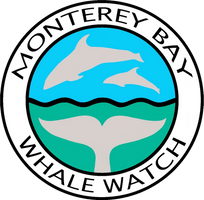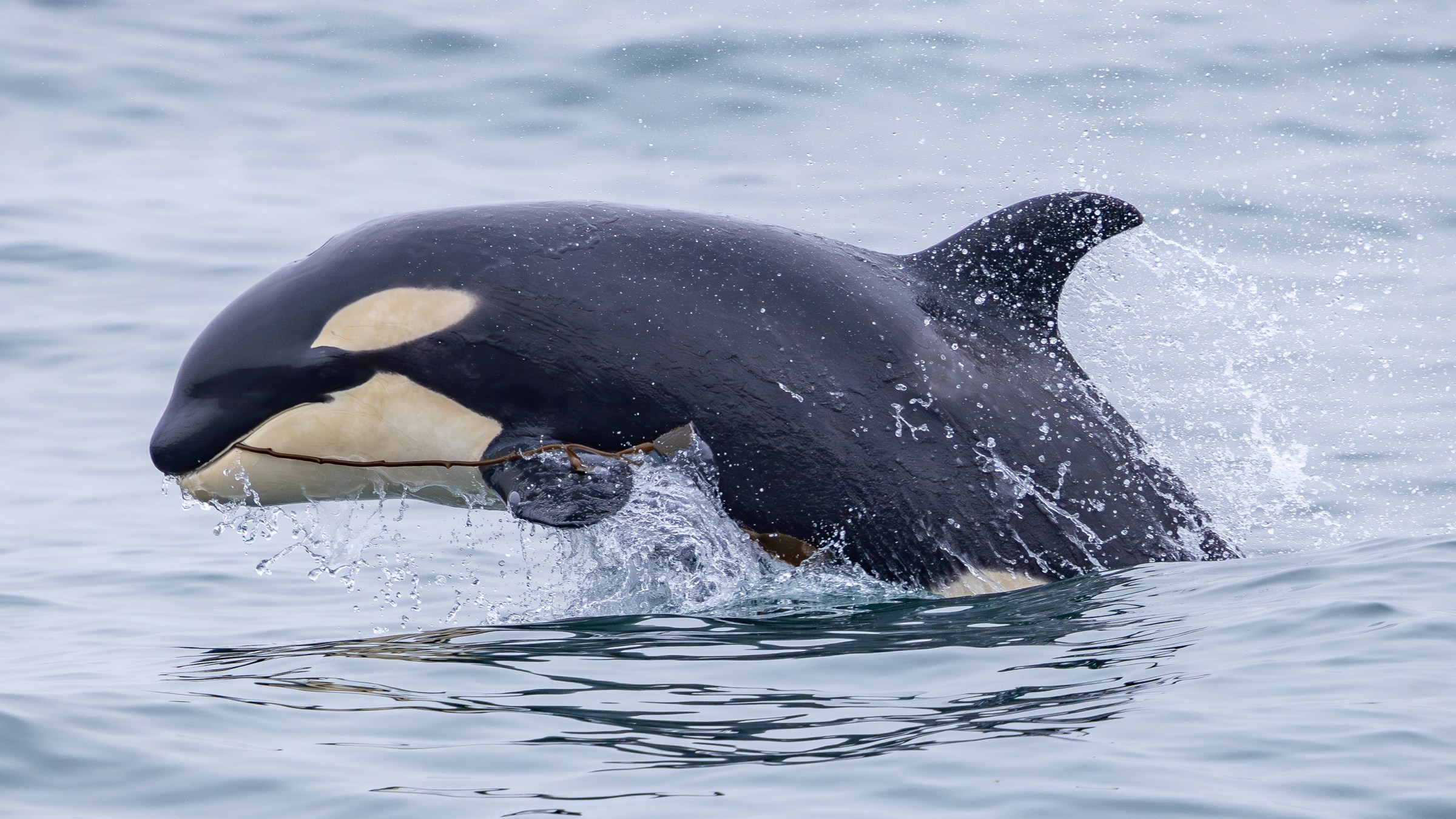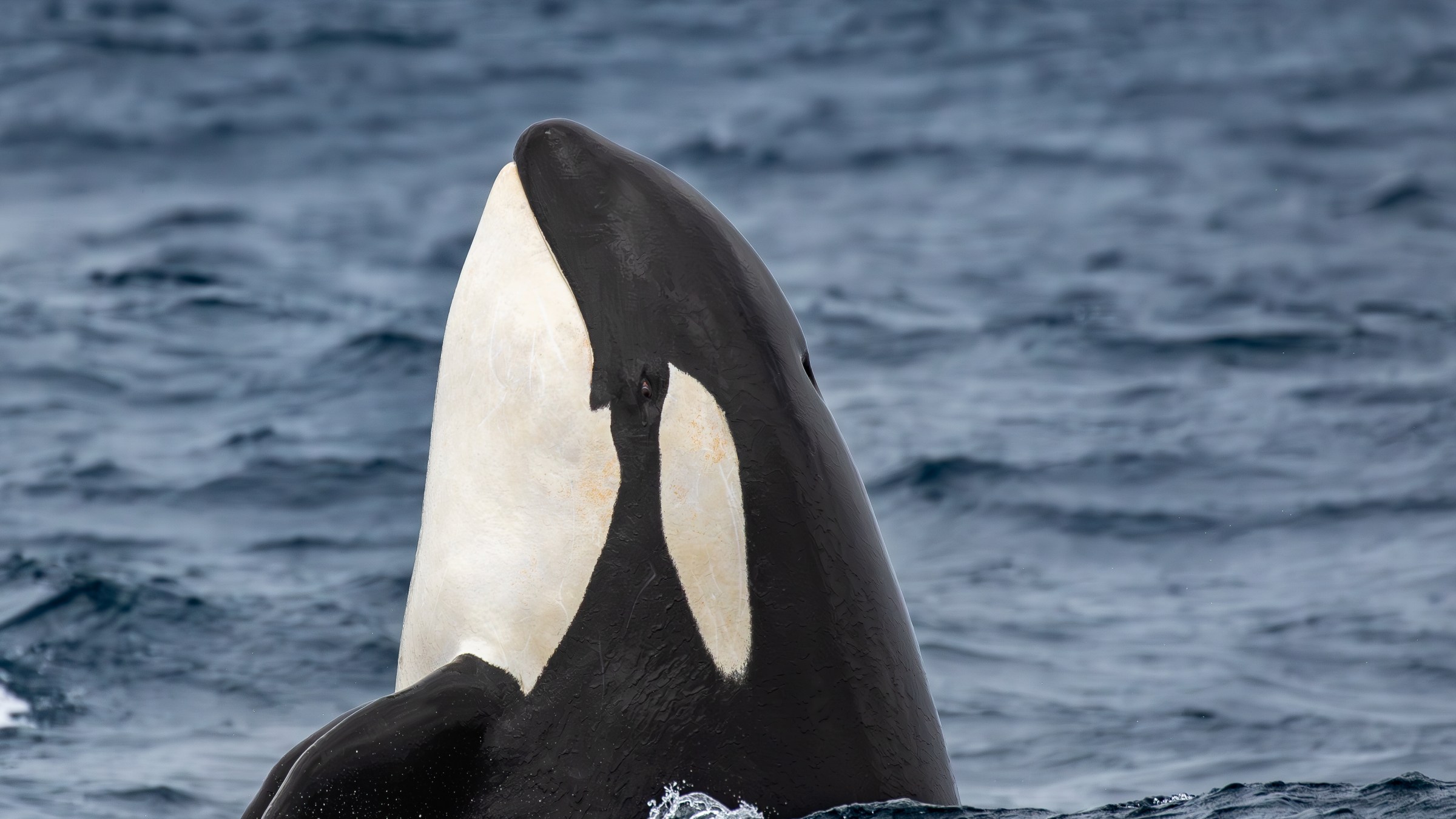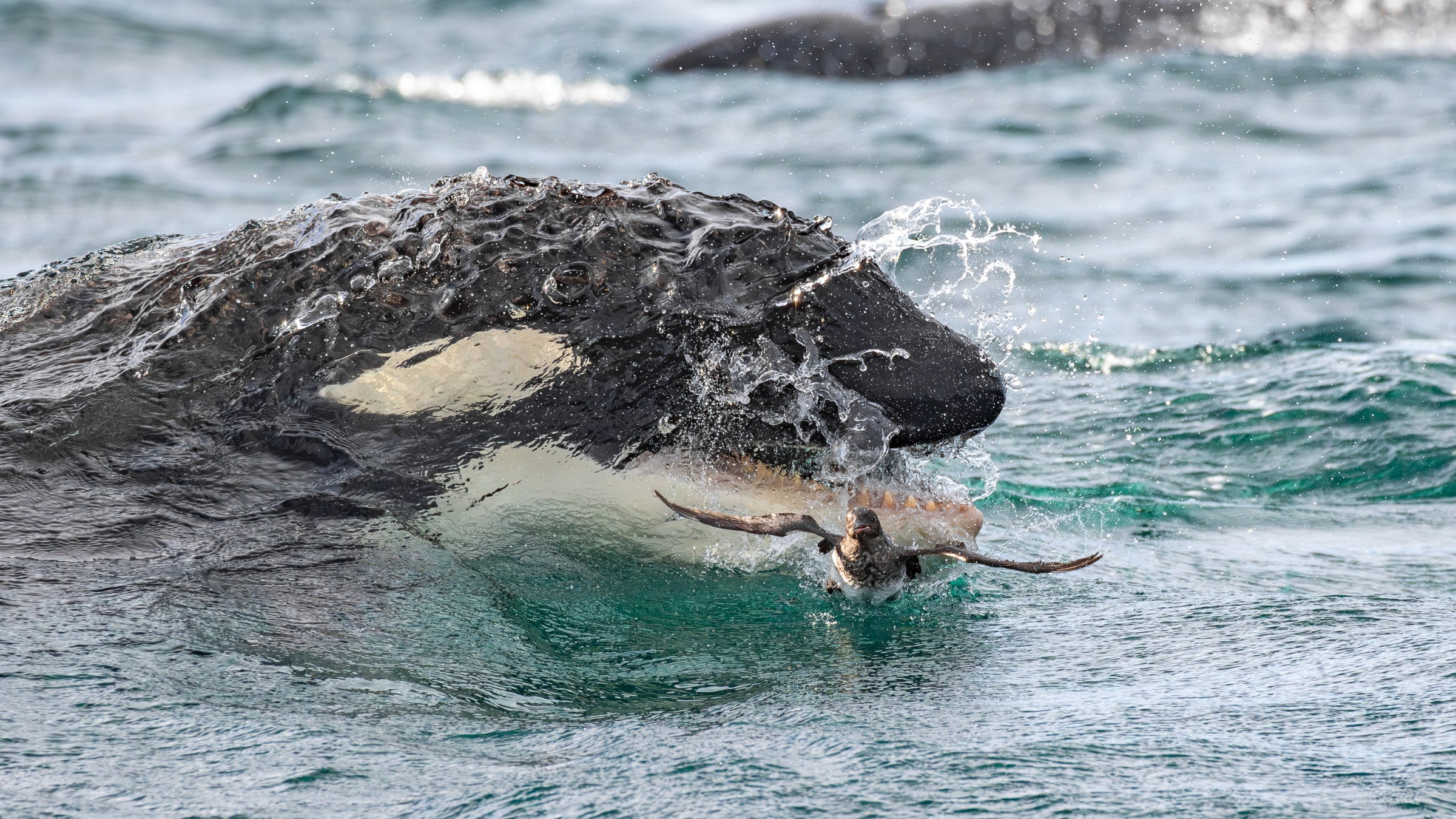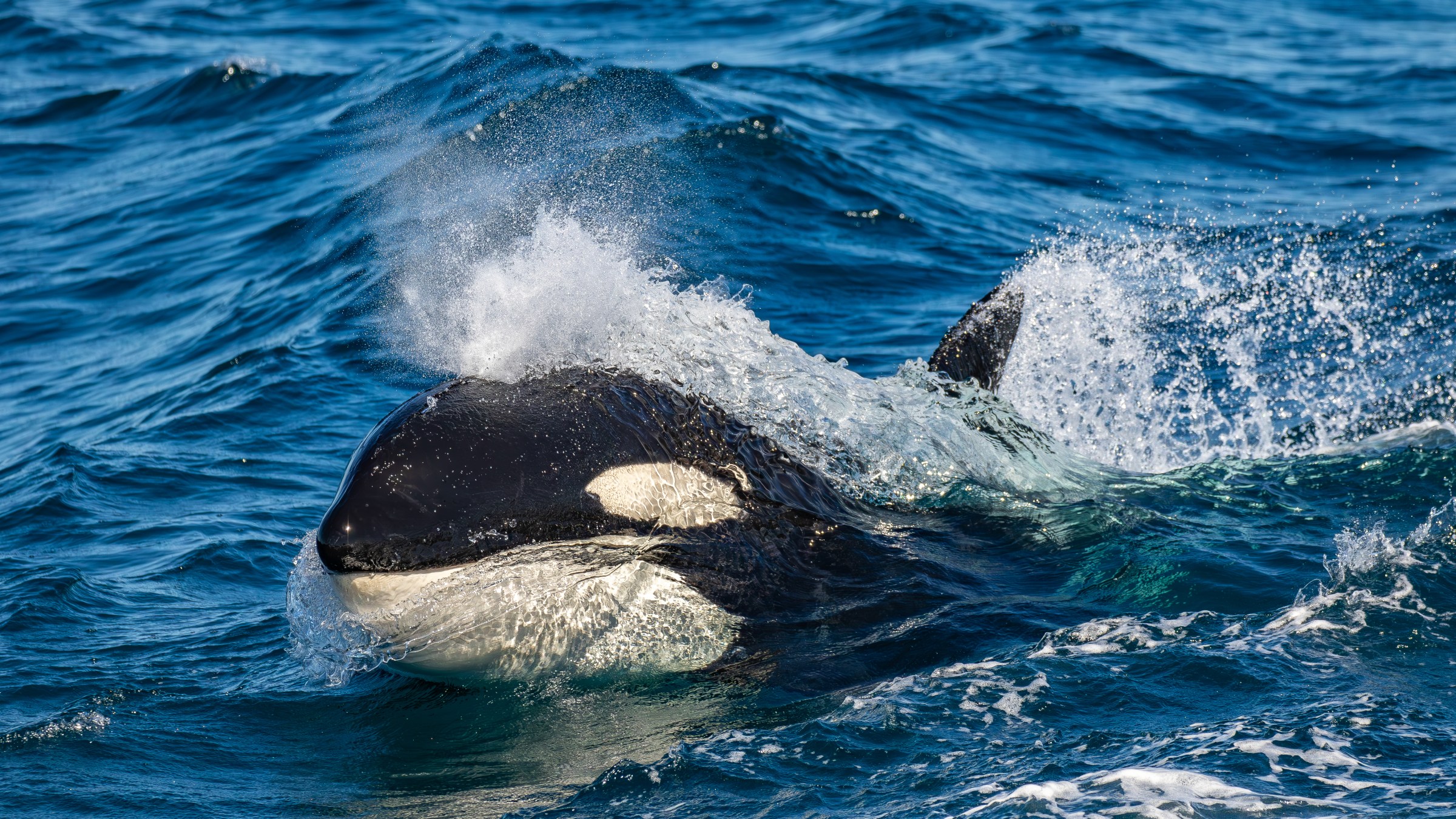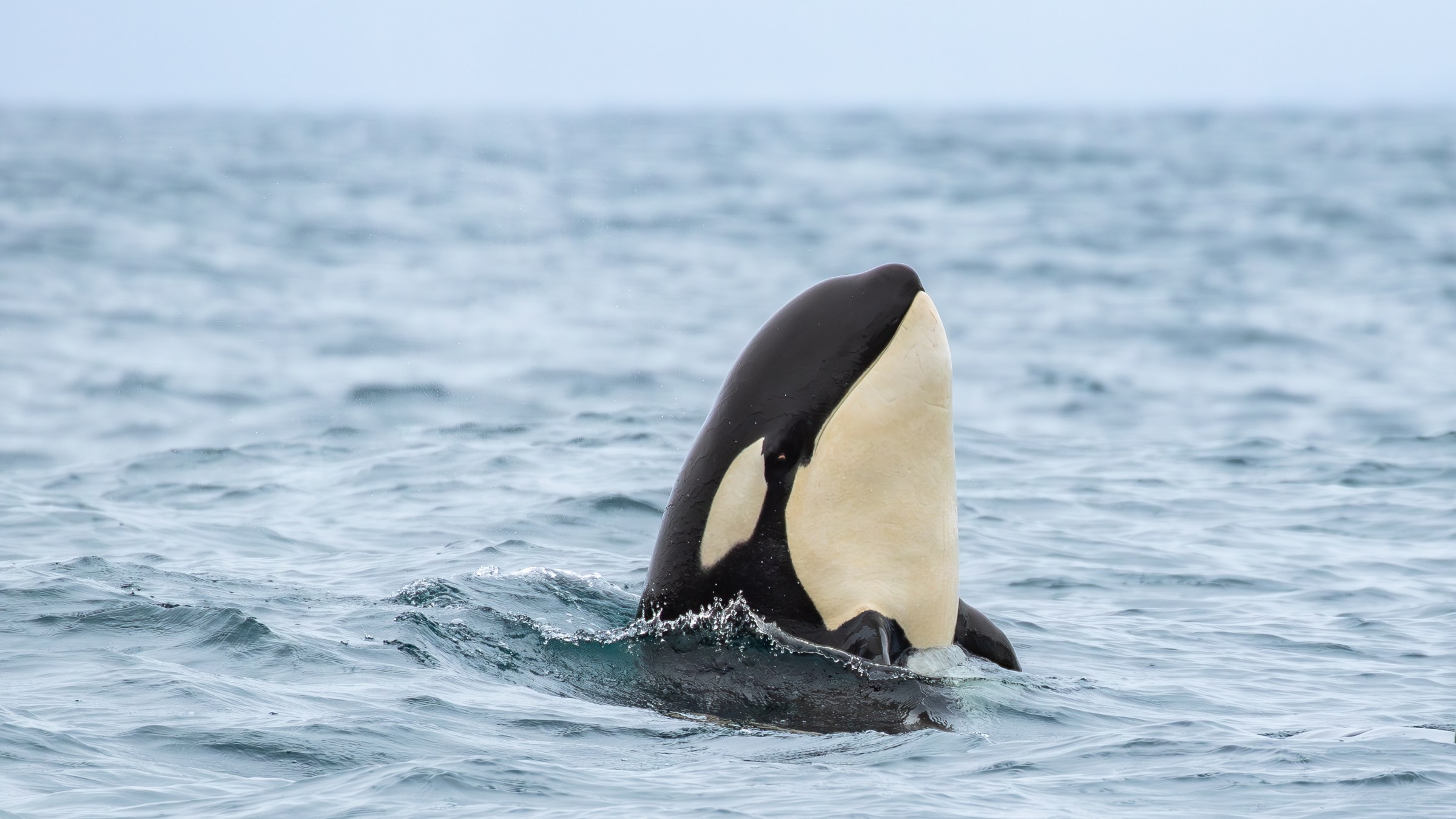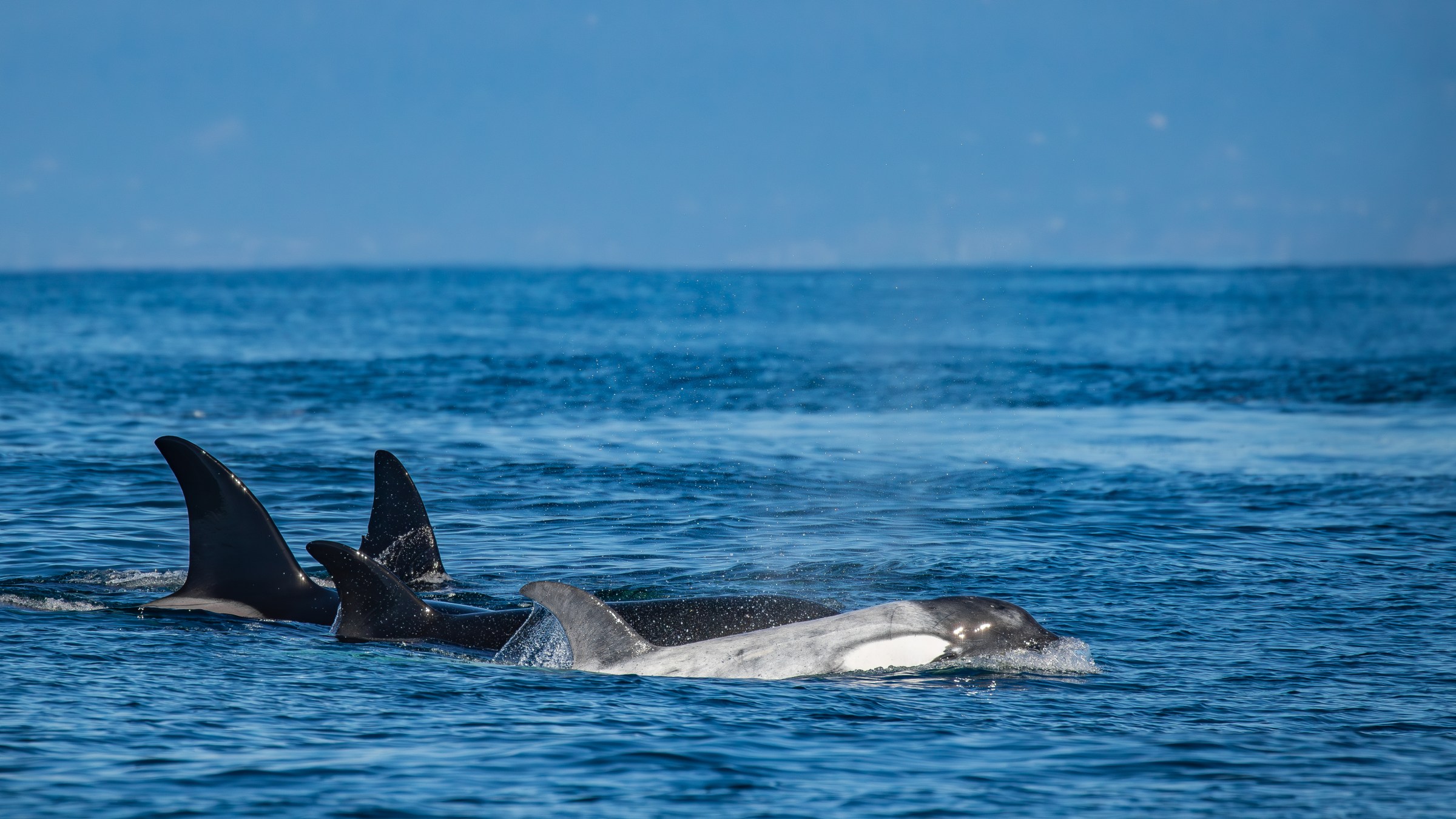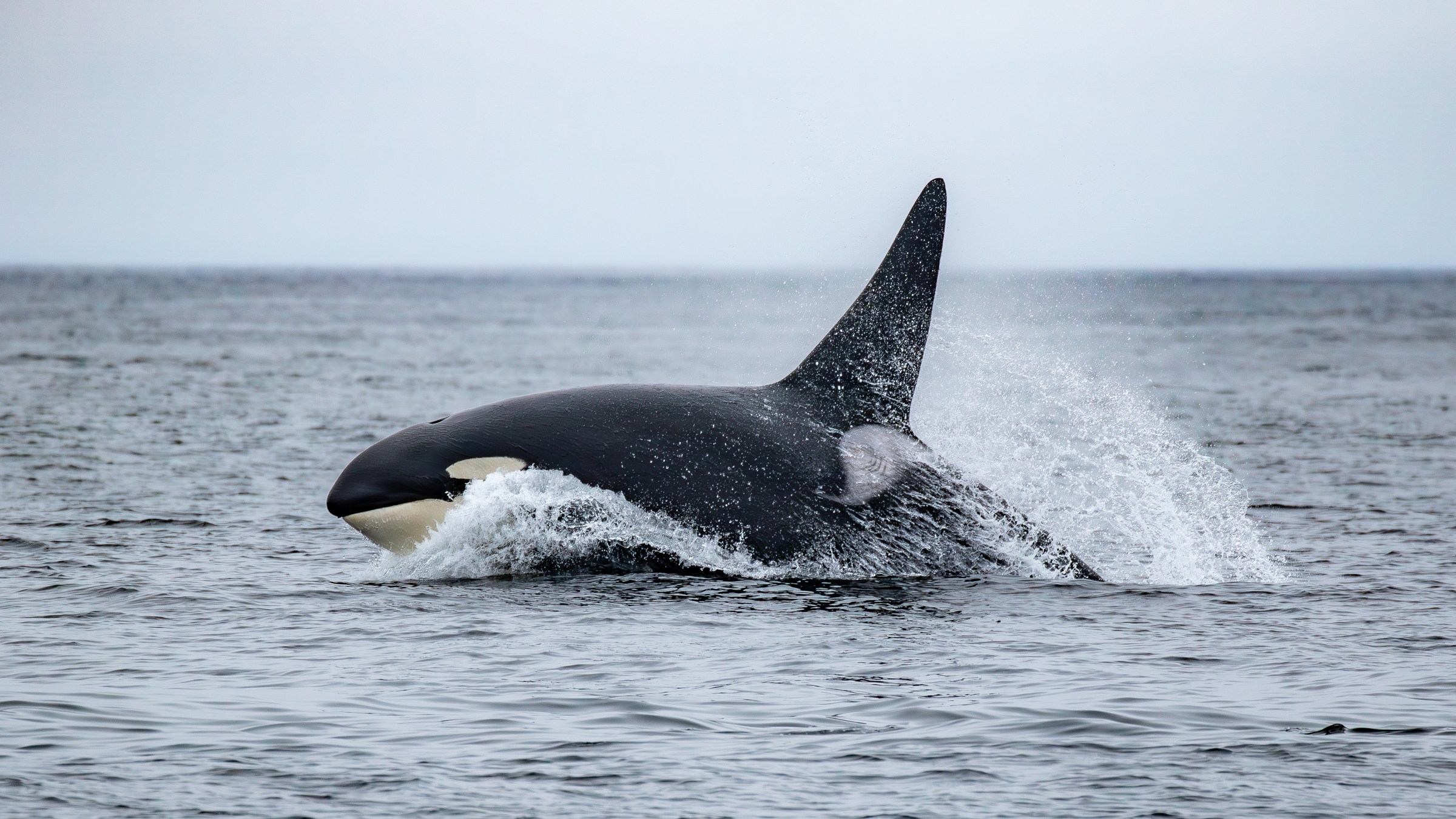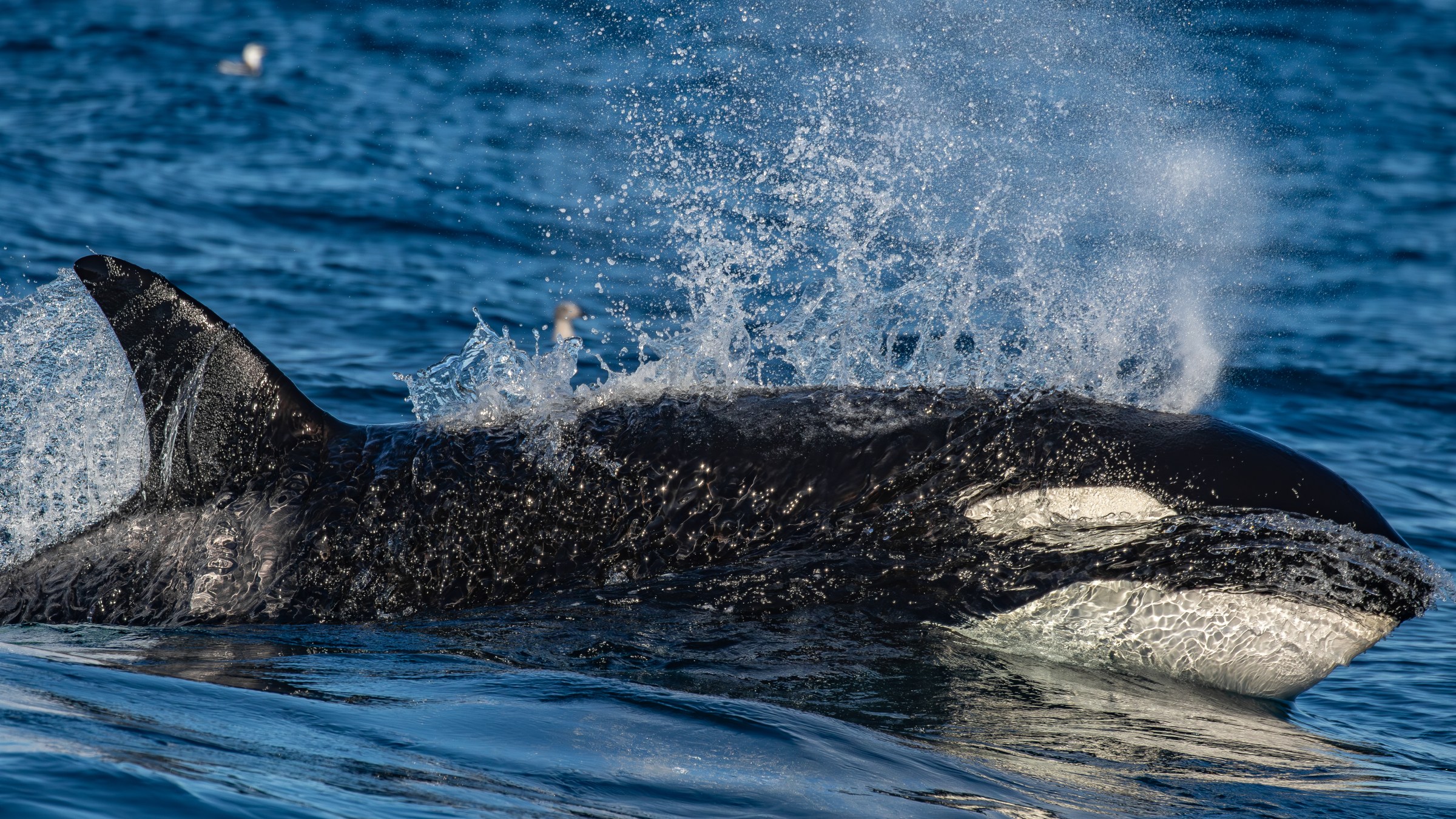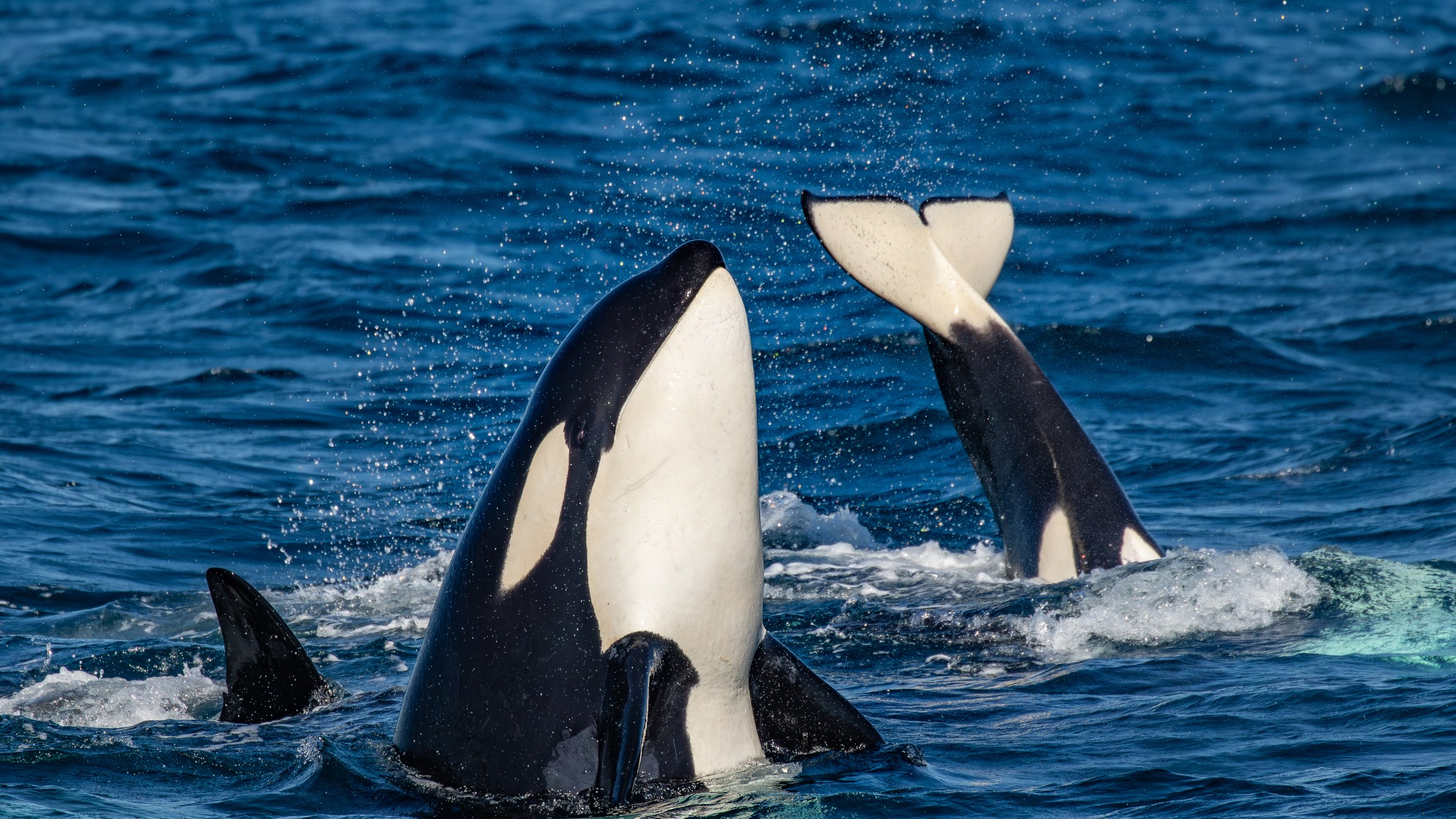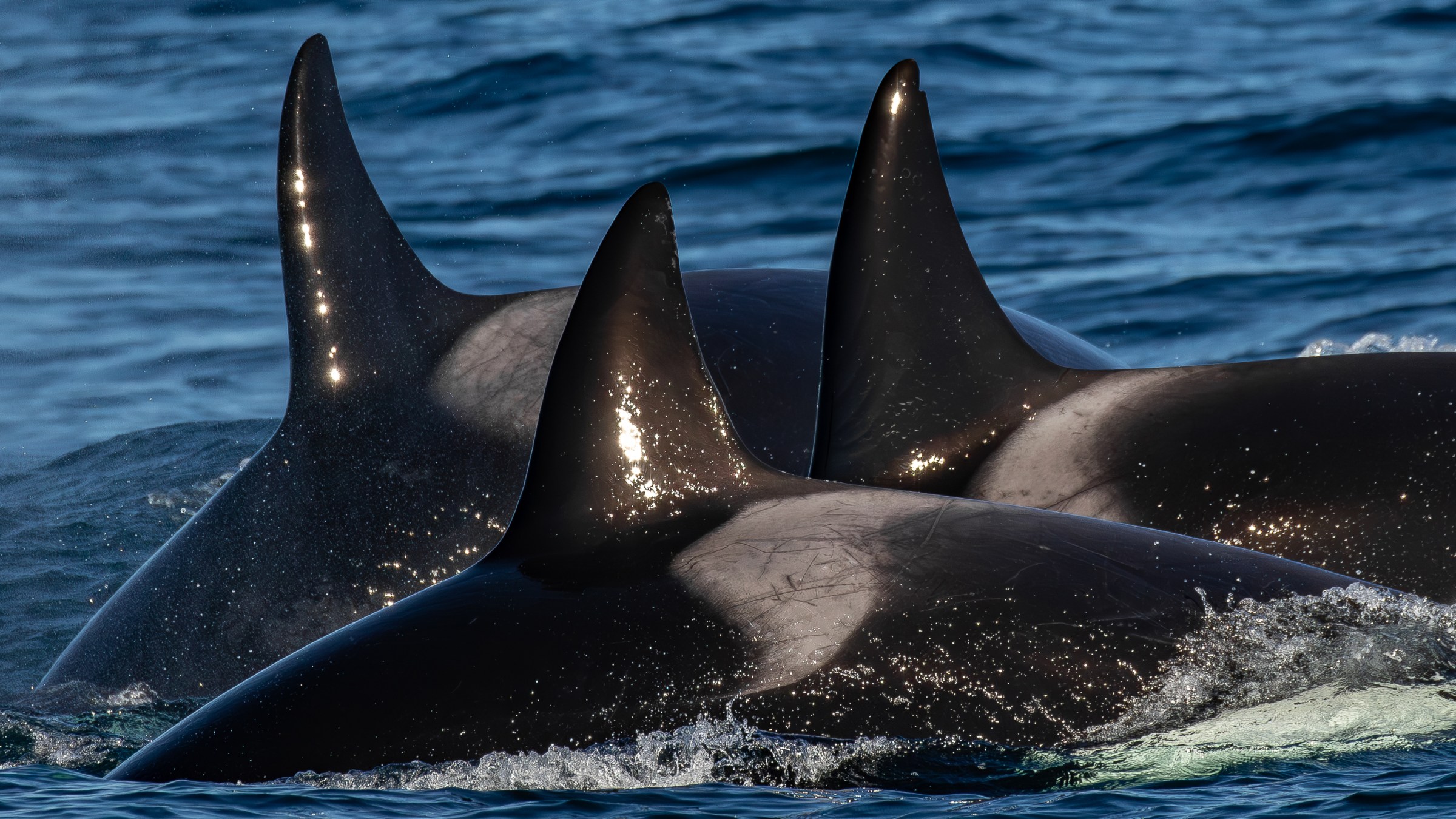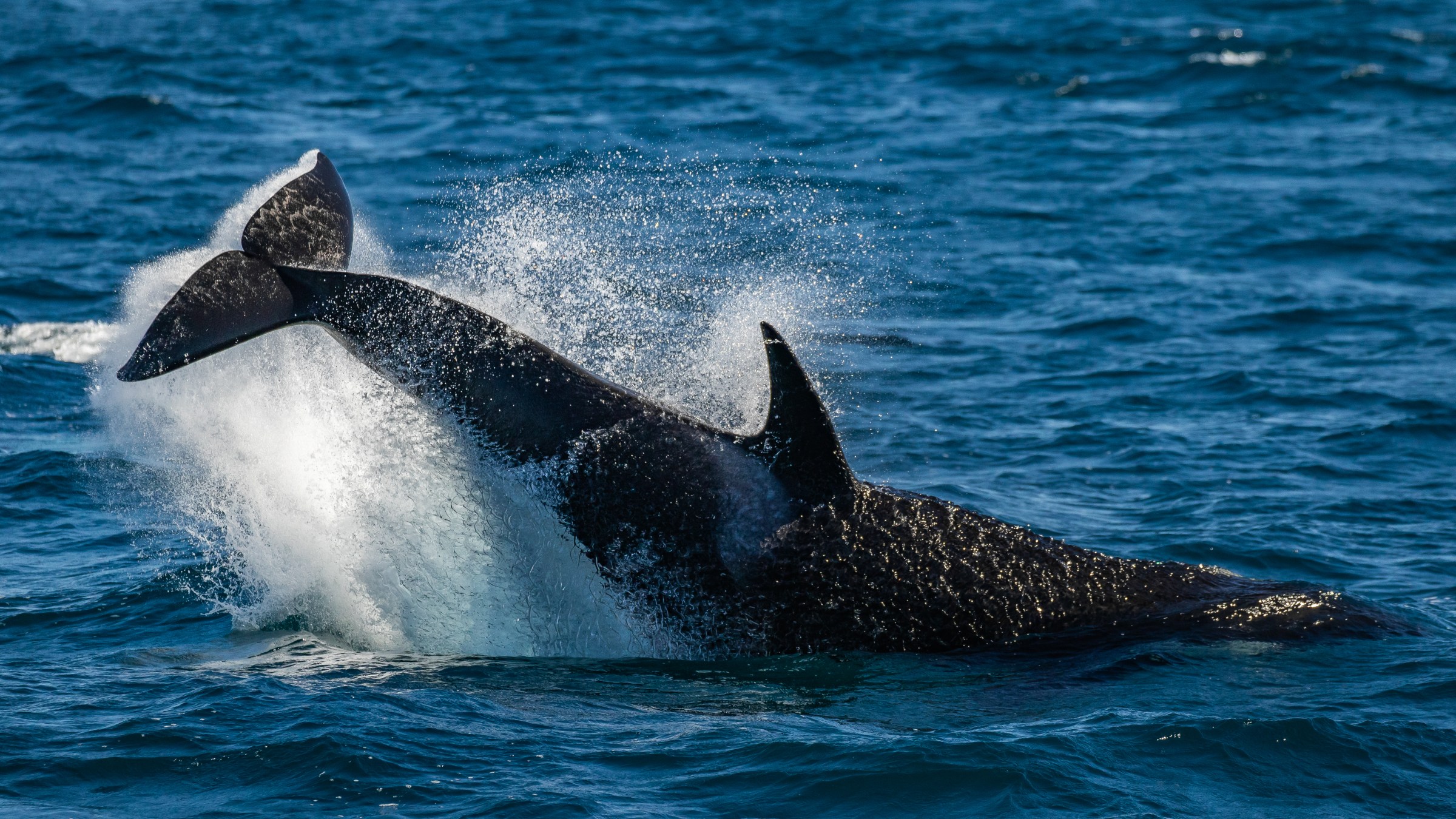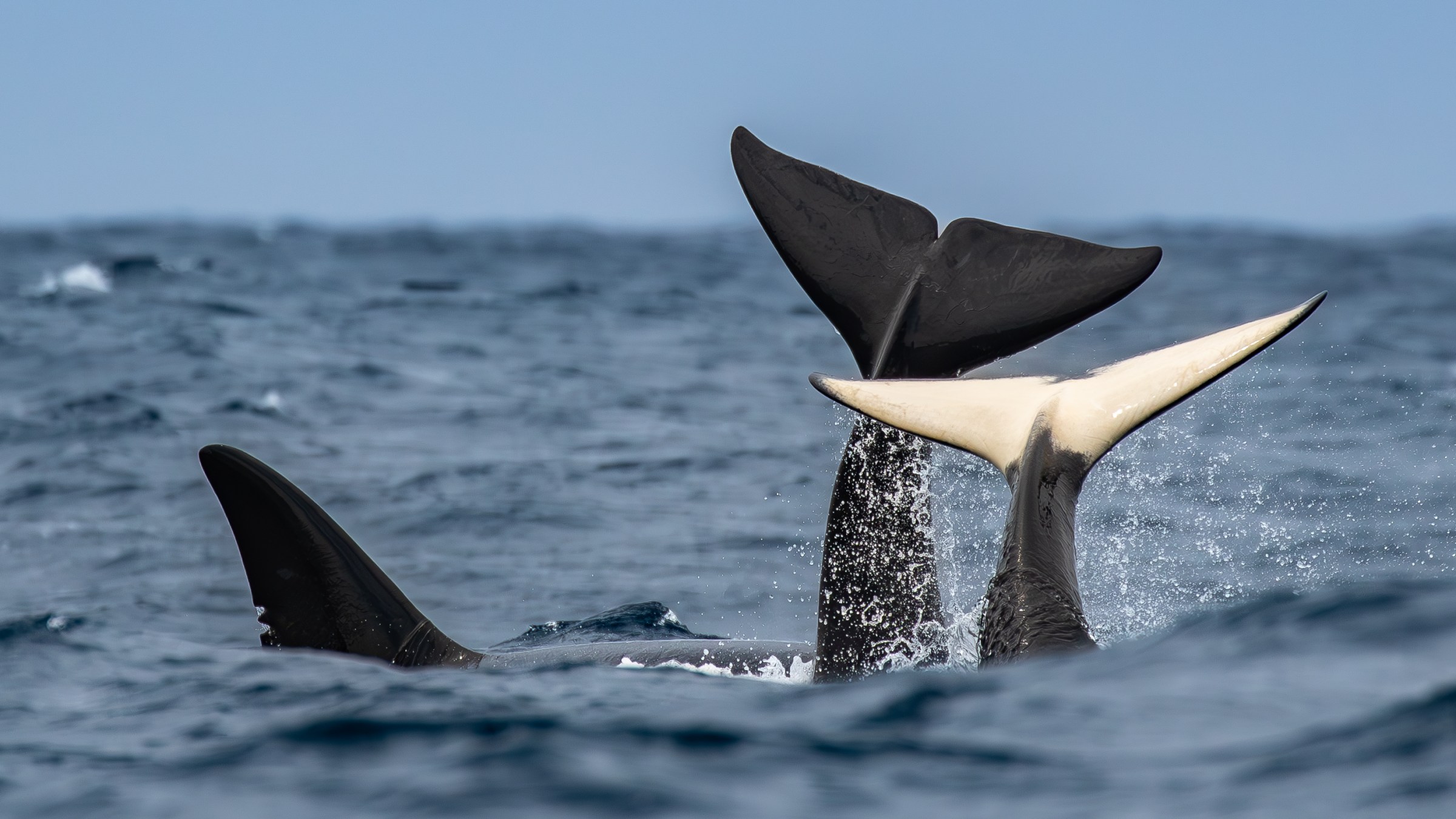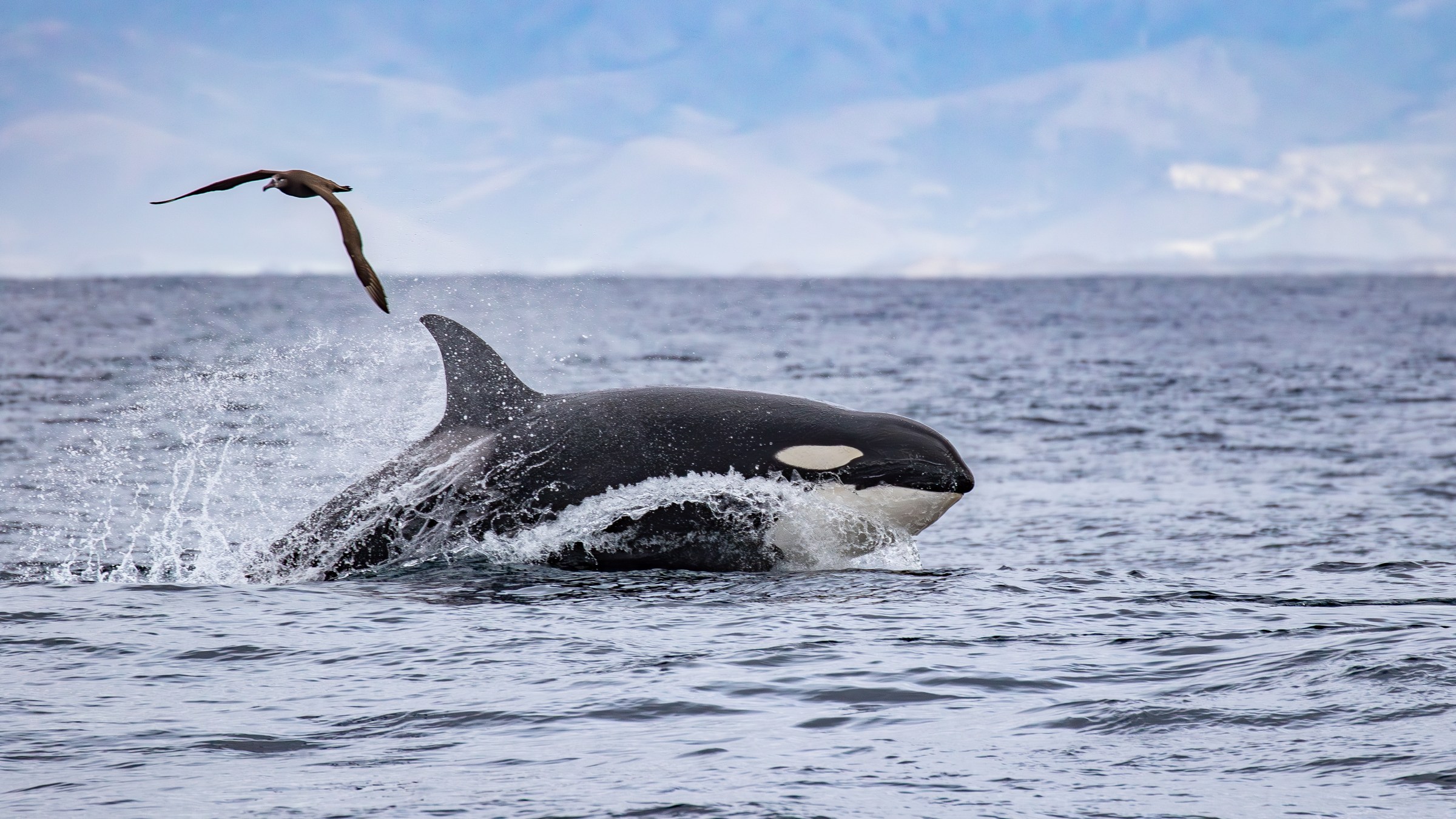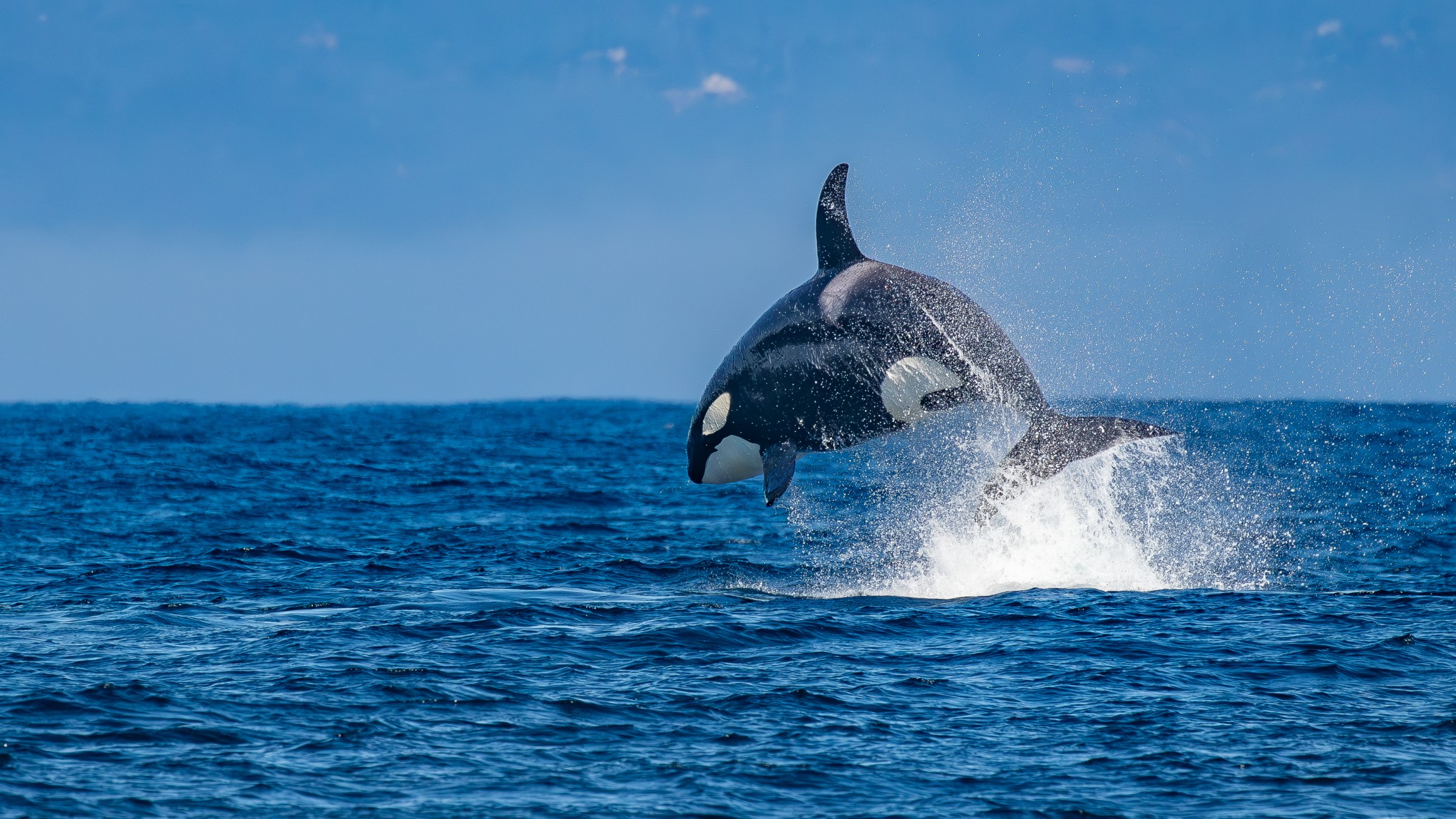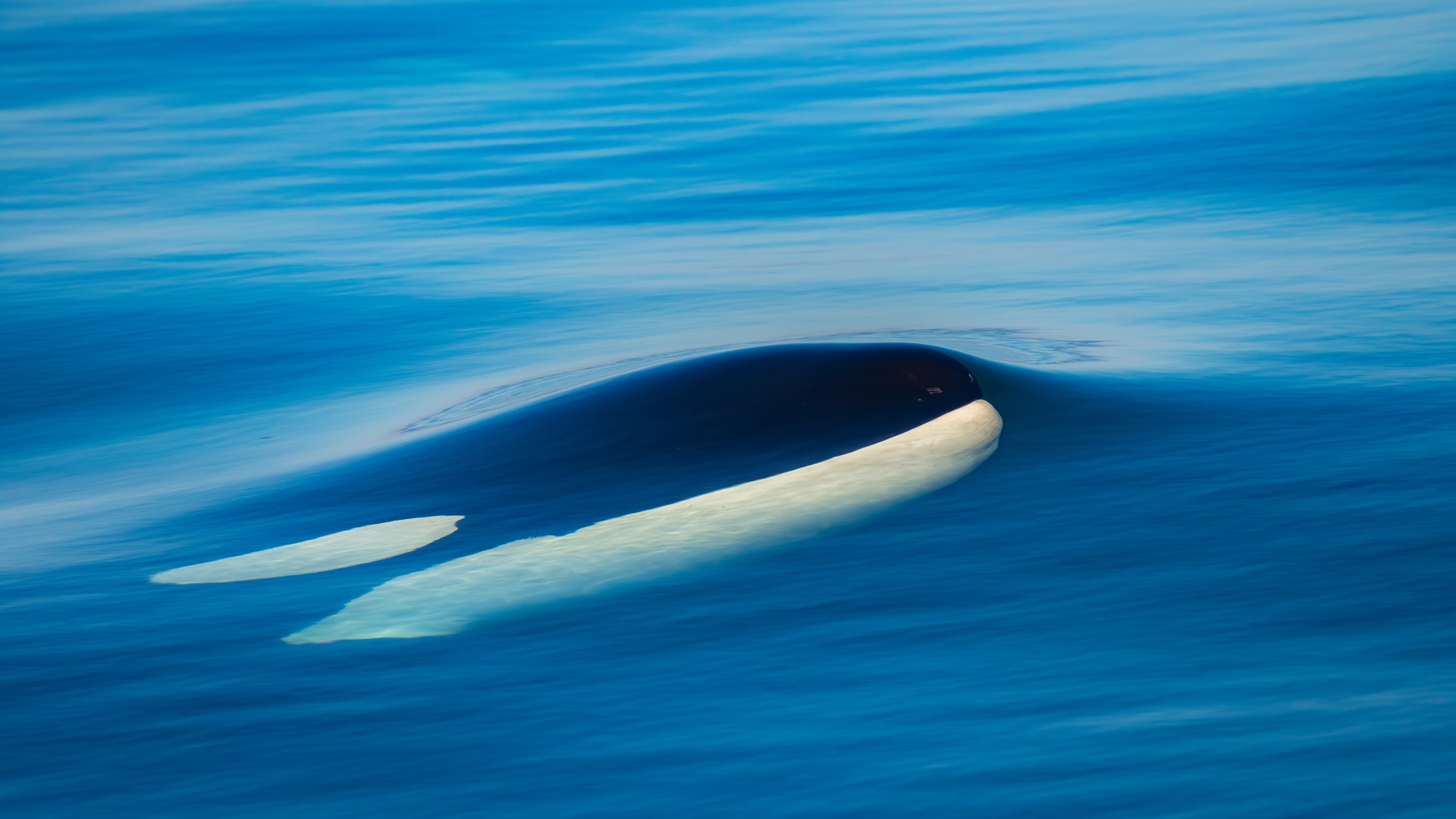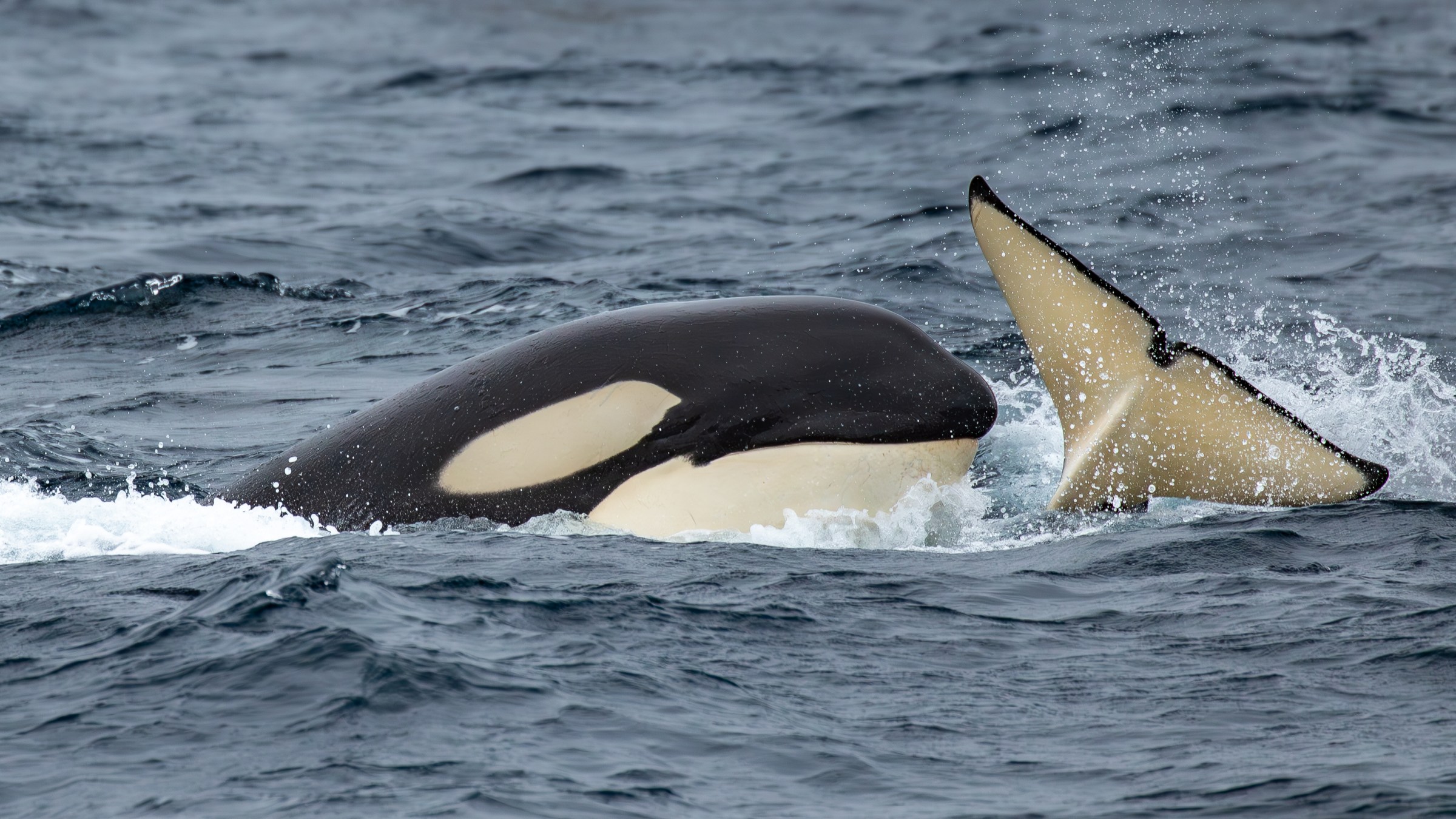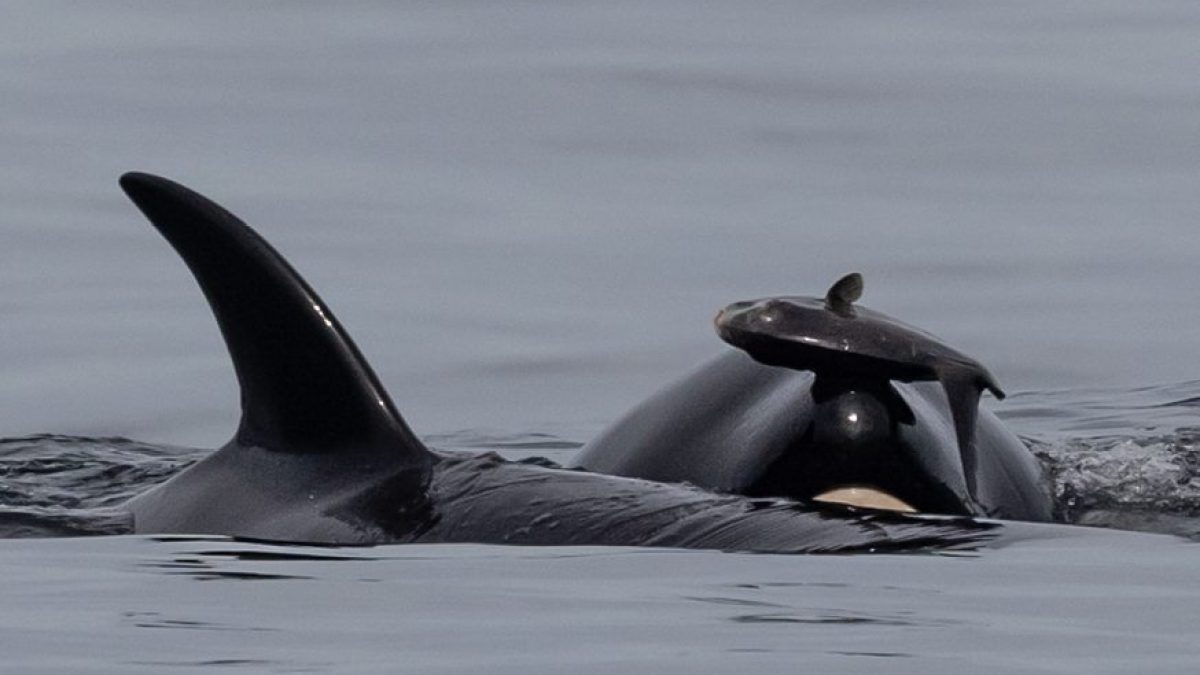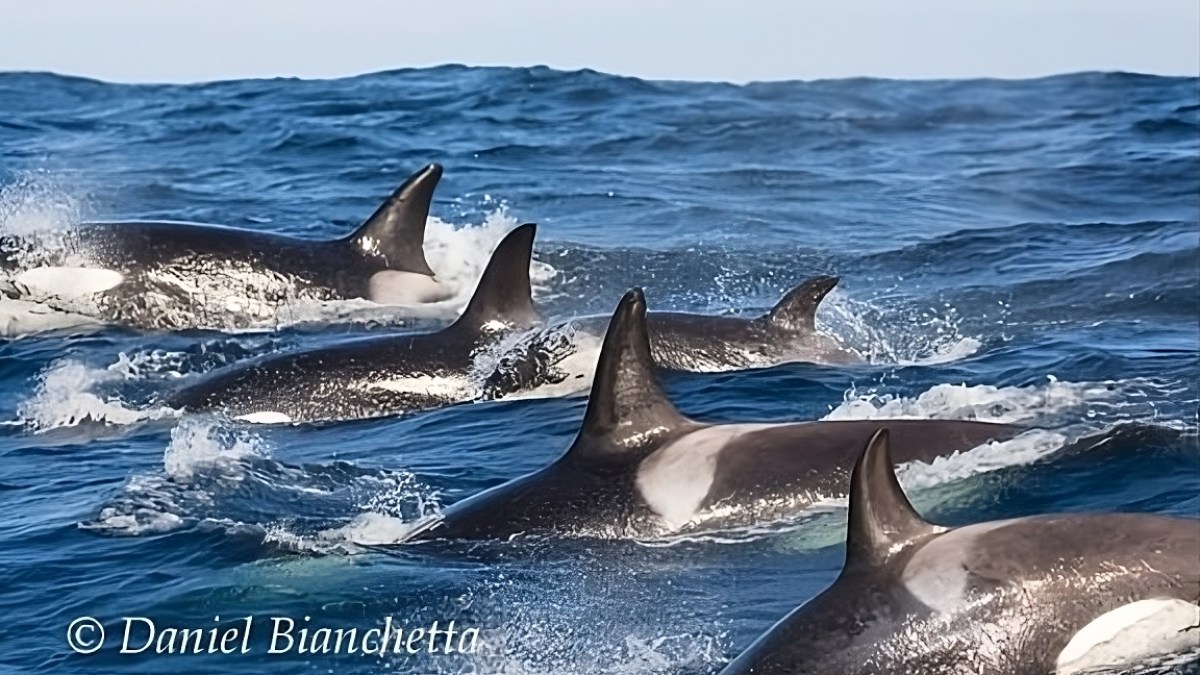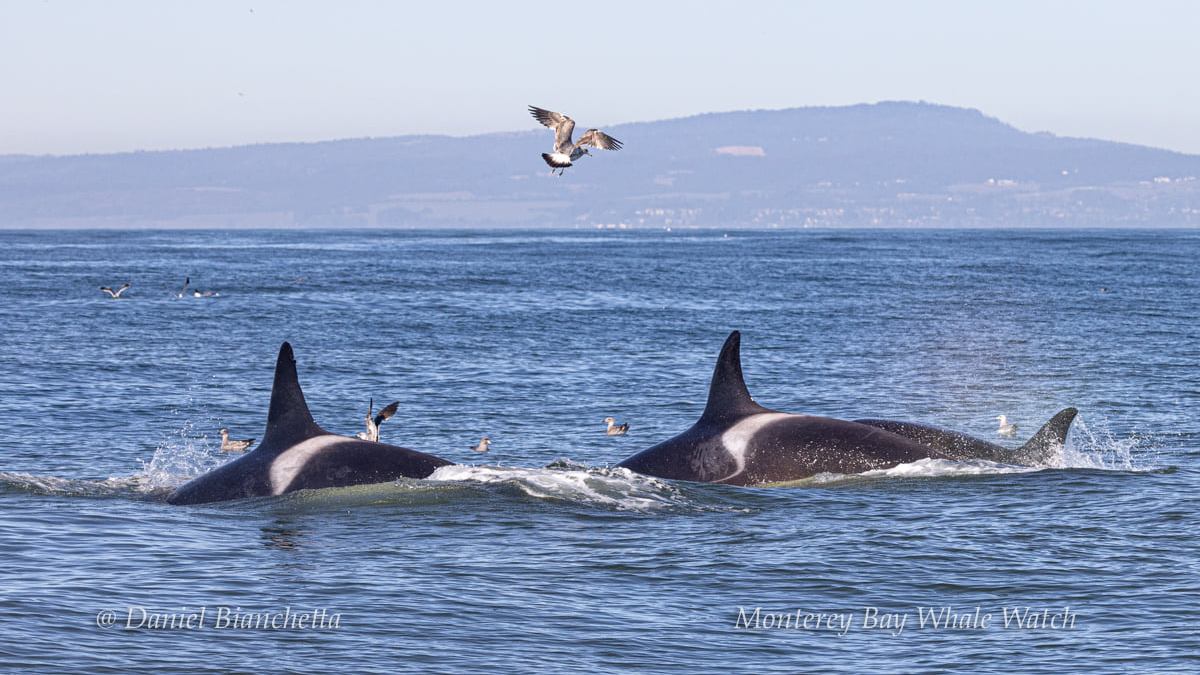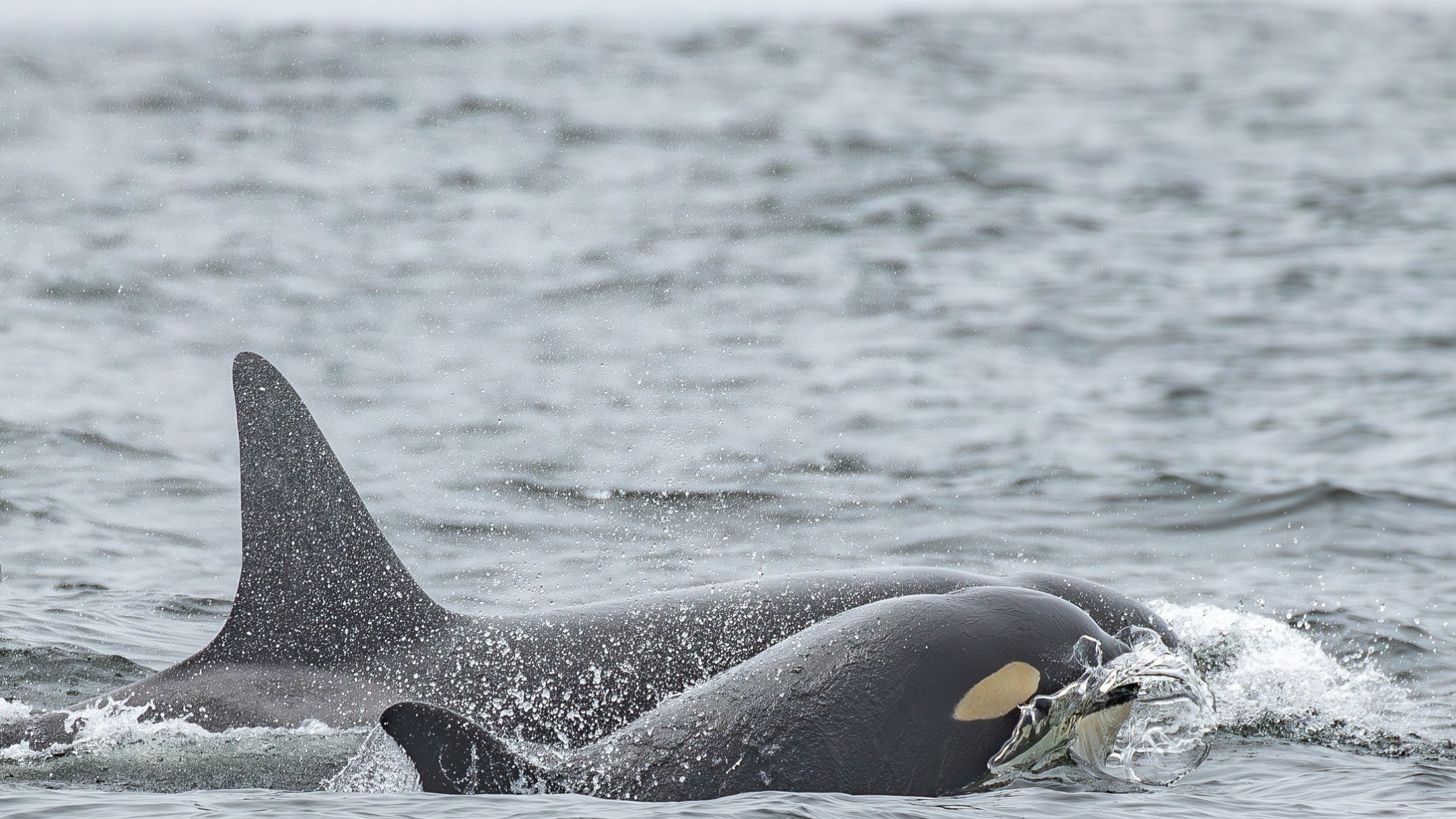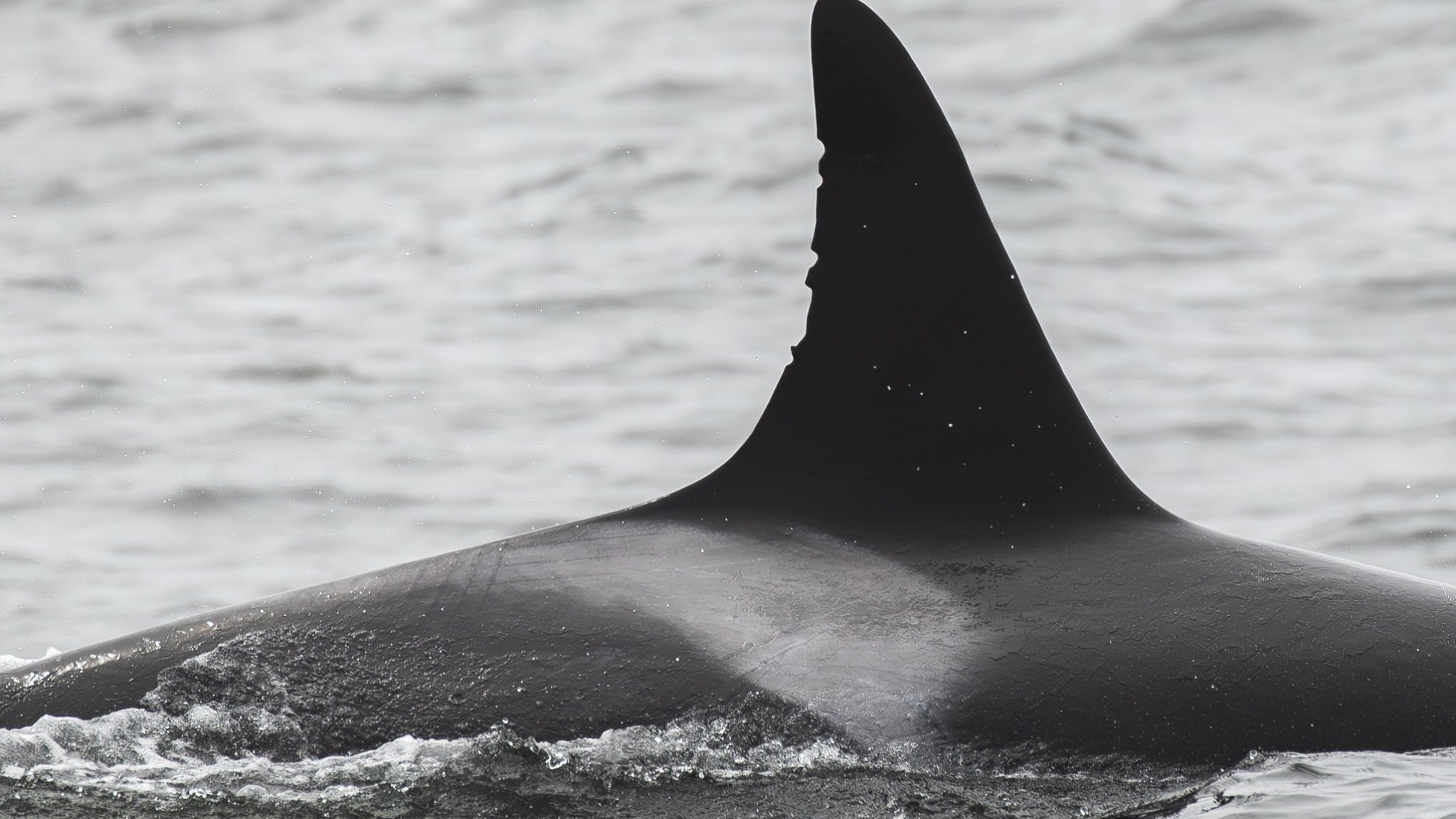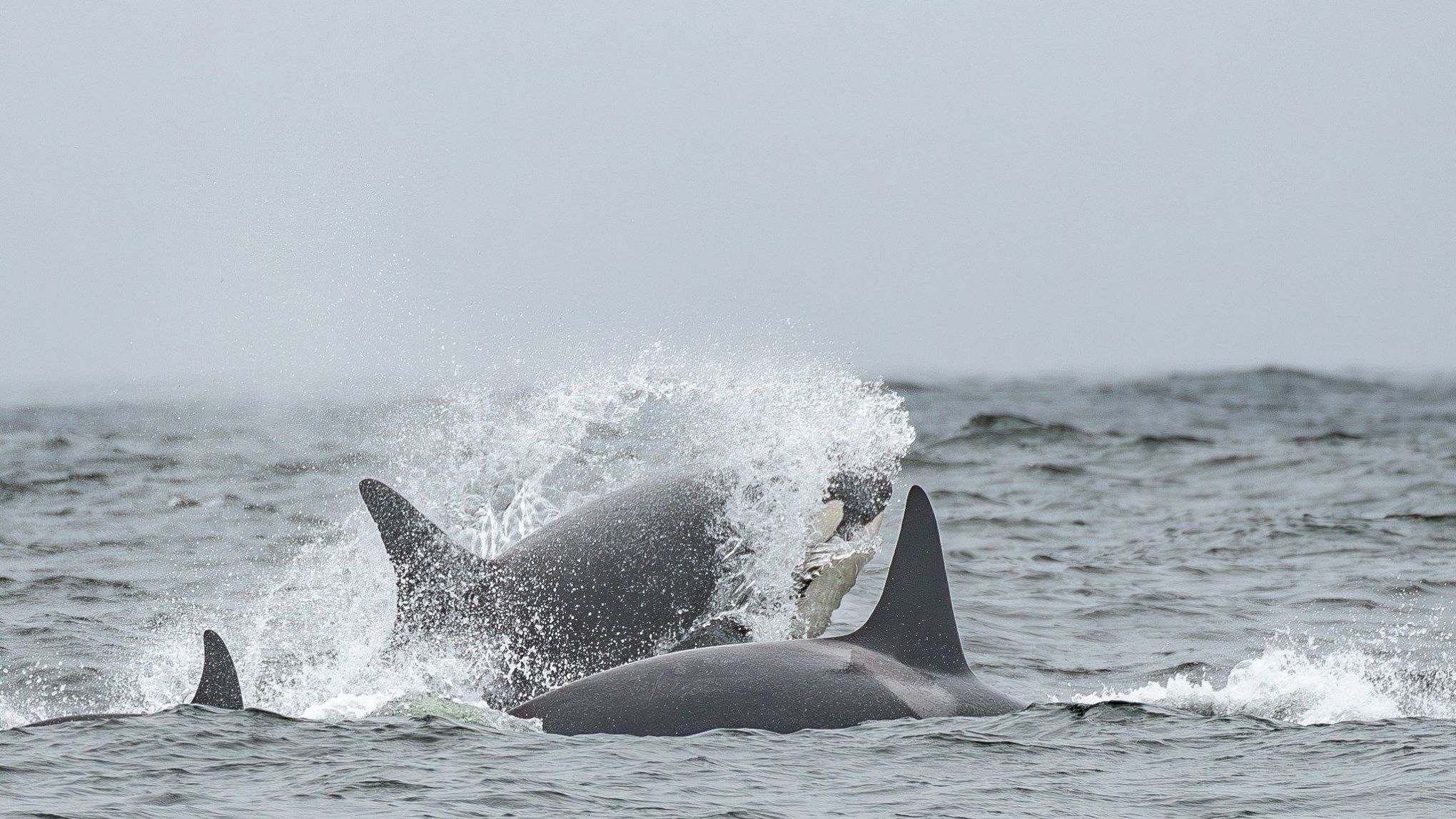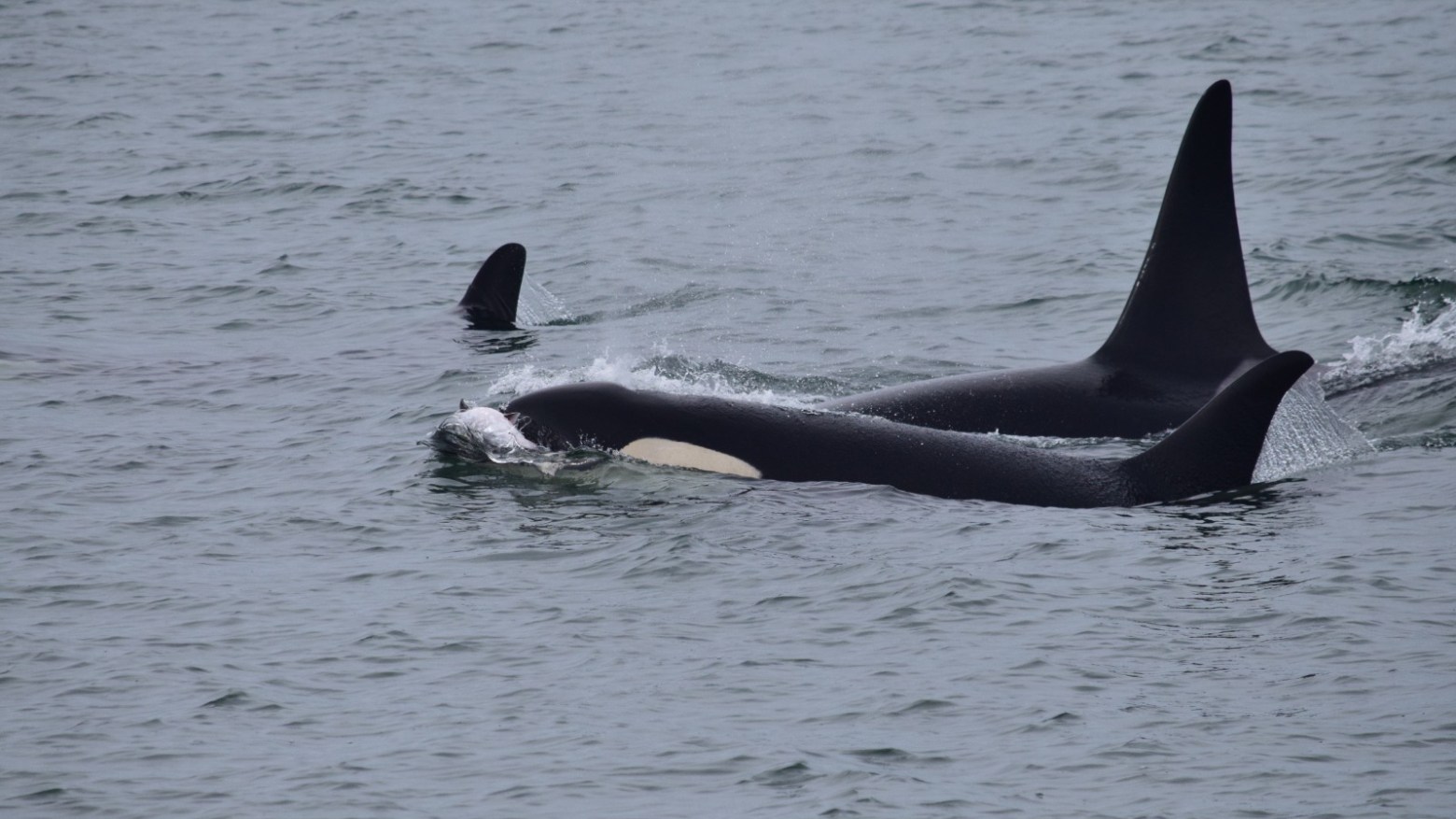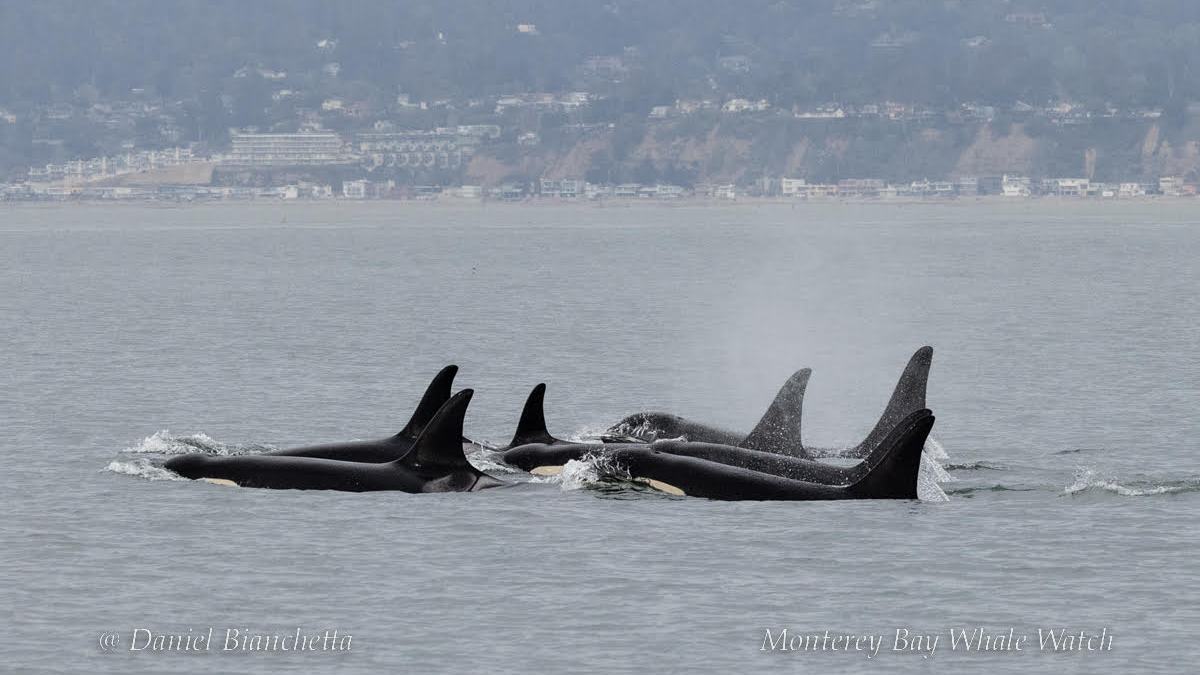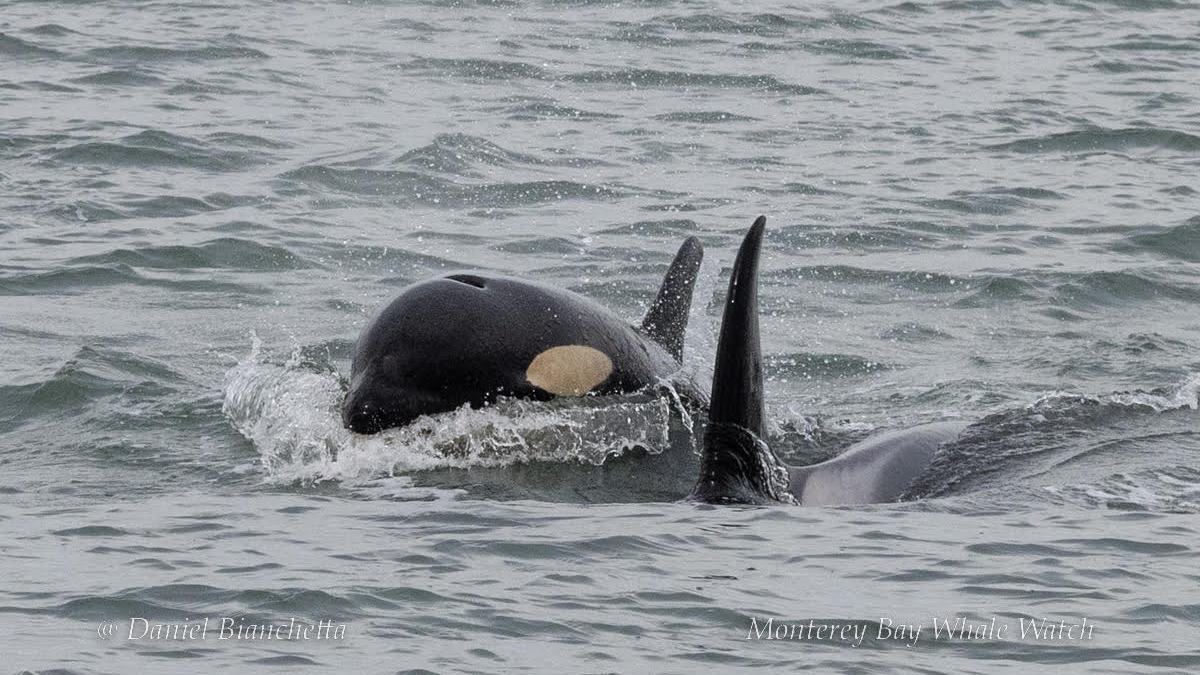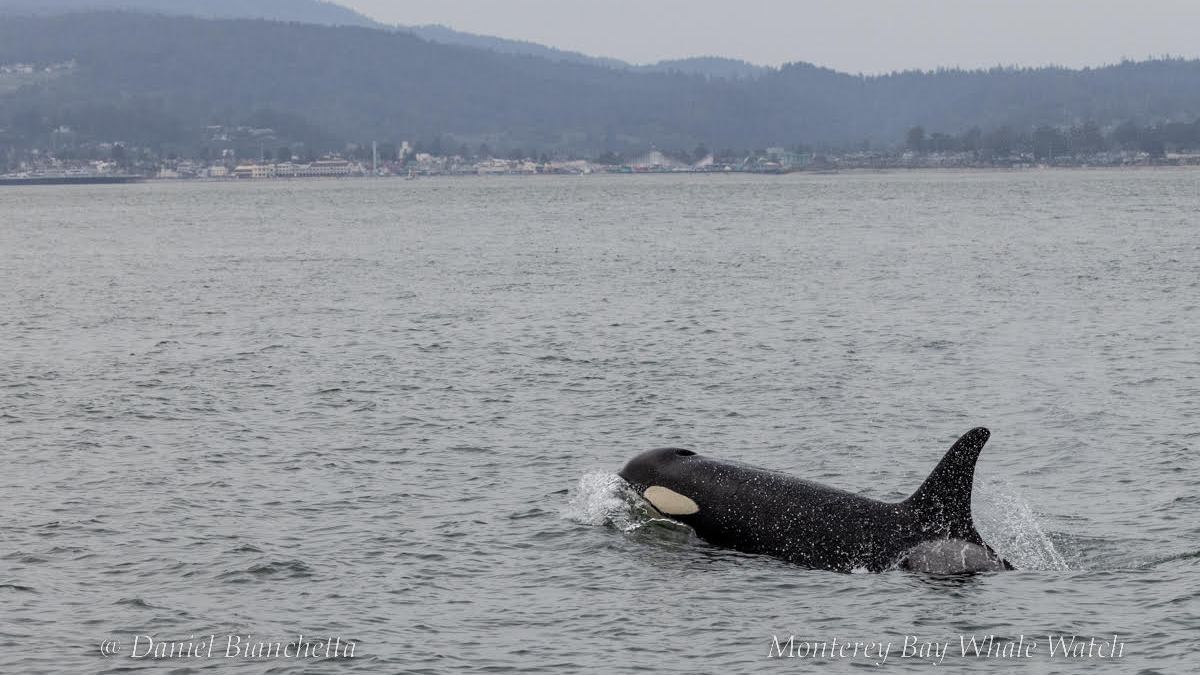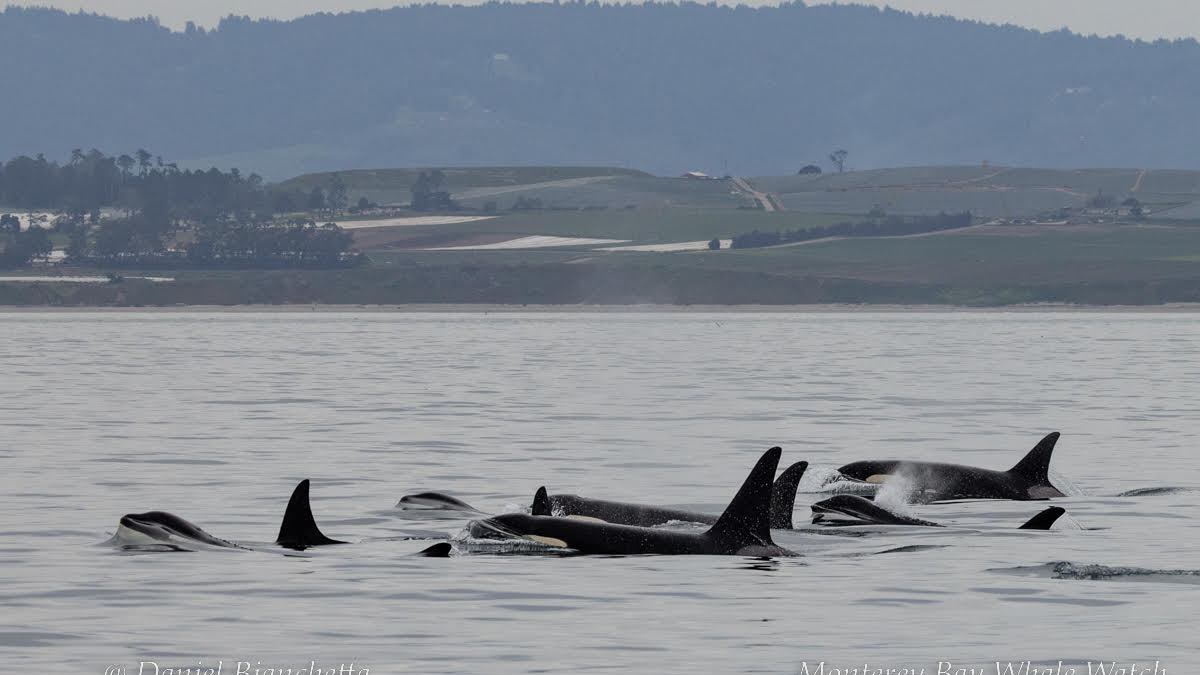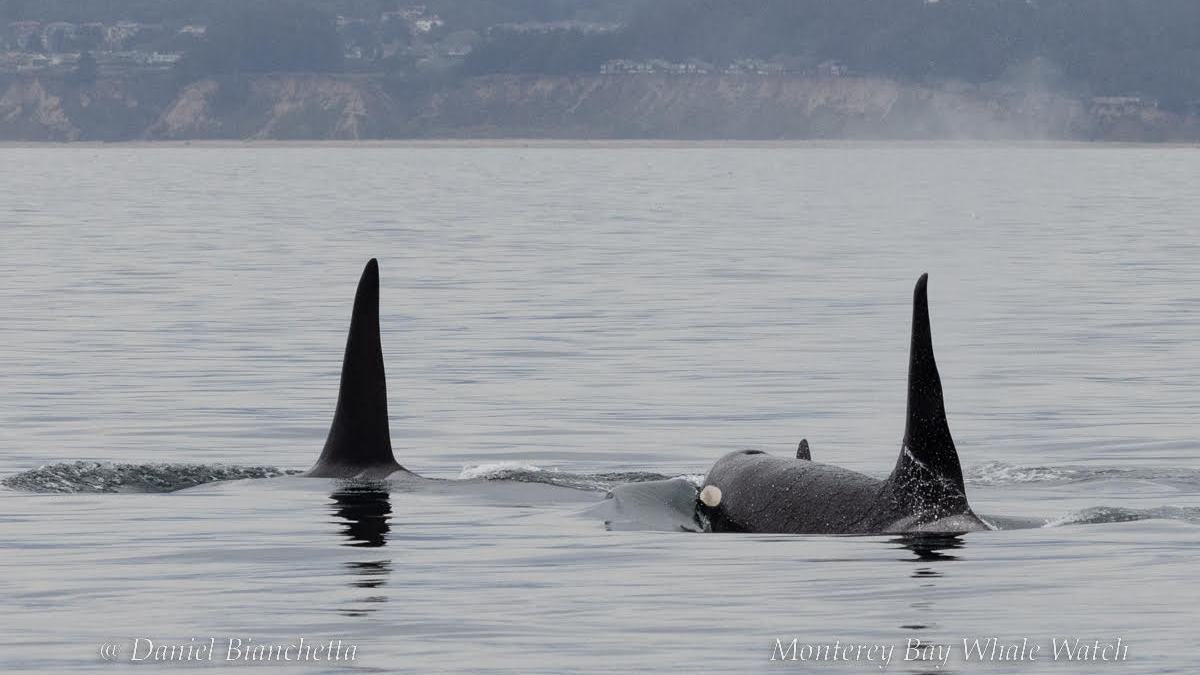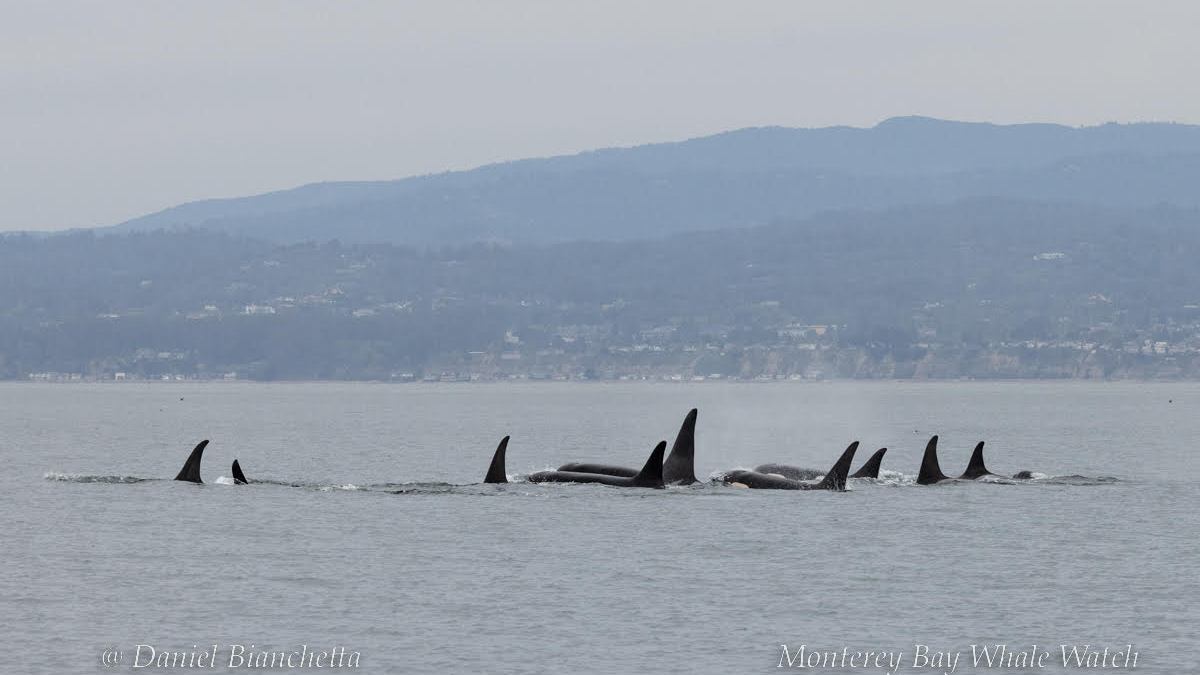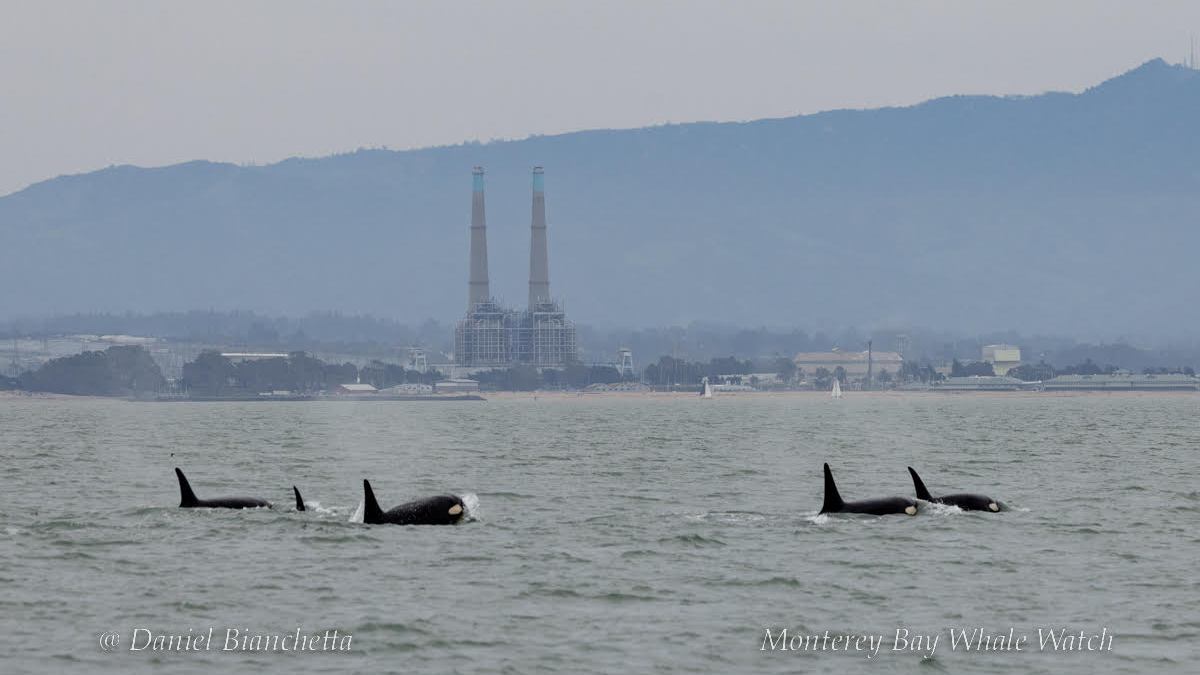ECOTYPE: BIGG'S (TRANSIENT) KILLER WHALE
Transient orcas travel and hunt in small groups of 2-6 individuals. They can be recognized by uniform closed gray saddle patches that are often heavily scarred by gray whales or other prey items. They move north and south along the coast from Southeast Alaska and British Columbia as far south as Southern California.
March through May is the peak season months for Bigg’s Killer Whales in Monterey Bay with September through November being our secondary season, they may be encountered at any time of the year. This ecotype of killer whales uses short range communication to not alert their prey species, marine mammals.
![]() Diet
Diet
Mammal Eaters: Specialize in gray whale calves in Spring, they prey on dolphins, elephant seals, sea lions, harbor seals, porpoises throughout the rest of the year
![]() Population Status | Monterey
Population Status | Monterey
Least Concern
![]() Legal Protection
Legal Protection
Marine Mammal Protection Act, National Marine Protected Area Act, Endangered Species Act
![]() Threats
Threats
Human Related Loss (Habitat Loss, Ocean Noise, Hunting, Food Source Loss, Climate Change, Disturbance, Entanglement, Harassment, Oil Spills, Pollution, Boat Strikes, Collisions)
![]() Size
Size
23 ft (Female)
32 ft (Male)
![]() Weight
Weight
15,500 lb (Female)
18,000 lb (Male)
BEHAVIORS
-
Feeding
-
Tail-Lobbing
-
Breaching
-
Spy Hop
-
Kelping
-
Socializing
-
Socializing
ECOTYPE: OFFSHORE KILLER WHALE
This specific ecotype of killer whale is rare in Monterey. We often have a multi year gap between sighting.
Offshores orcas inhabits the water well beyond the coast. Far less is known about offshore orcas, but recent observations show that sharks are an important part of their diet as fish-eaters. Offshores tend to be smaller than Transient killer whales and group in pods of between 60 – 100 individuals. This ecotype uses long range communication to spot their prey.
![]() Diet
Diet
Fish Eaters: Fish especially sharks like Sleeper shark, spiny dogfish, blue shark and possibly Pacific salmon, Pacific halibut and Opah
![]() Population Status | Monterey
Population Status | Monterey
Data Deficient
![]() Legal Protection
Legal Protection
Marine Mammal Protection Act, National Marine Protected Area Act, Endangered Species Act
![]() Threats
Threats
Human Related Loss (Habitat Loss, Ocean Noise, Hunting, Food Source Loss, Climate Change, Disturbance, Entanglement, Harassment, Oil Spills, Pollution, Boat Strikes, Collisions)
![]() Size
Size
22ft
![]() Weight
Weight
15,000 lb
BEHAVIORS
-
Breaching
-
Tail-Lobbing
ECOTYPE: (SOUTHERN) RESIDENT KILLER WHALE
There are two subgroups. Northern residents range from Vancouver Island north to SE Alaska while Southern residents occupy greater Puget Sound. This specific subtype of killer whale is rare in Monterey. We often have a multi year gap between sighting. They can be recognized by varying pigment levels in their saddle patch and an open saddle patch.
There are three pods for Southern Resident killer whales, called the J, K, and L pods for a total number of 74 individuals. They are the only residents orcas we can see in Monterey. These families of killer whales are fish eaters and feed primarily on endangered Chinook Salmon, as dam creation took hold, their food source (chinook salmon) was prevented from going into the ocean leading to the resident numbers to decrease. This ecotype uses long range echolocation to identify the species of fish by the swim bladder.
![]() Diet
Diet
Fish Eaters: Salmon (primarily Chinook but also Chum and Coho Salmon), Lingcod, Big stake
![]() Population Status | Monterey
Population Status | Monterey
Federally Endangered
![]() Legal Protection
Legal Protection
Marine Mammal Protection Act, National Marine Protected Area Act, Endangered Species Act
![]() Threats
Threats
Human Related Loss (Habitat Loss, Ocean Noise, Hunting, Food Source Loss, Climate Change, Disturbance, Entanglement, Harassment, Oil Spills, Pollution, Boat Strikes, Collisions)
![]() Size
Size
21ft (Female)
24ft (Male)
![]() Weight
Weight
14,000 lb (Female)
16,000 lb (Male)
BEHAVIORS
-
Feeding
-
Spy Hop
-
Breaching
-
Tail-Lobbing
